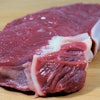
New practices and technologies can offer the twin advantage of making operations run more quickly and efficiently and of freeing up time to focus on areas that may previously have not received the attention merited.
In the poultry industry, there are numerous areas where applying new practices and technologies, and applying it well, can lead to a variety of benefits, ranging from higher worker and broiler welfare through to increased yields and lower costs.
Preslaughter enclosures
In some broiler houses, infrastructure is already in place to keep birds separate and facilitate harvesting, while in others it is absent, meaning that the harvesting team separate birds.
To do this, they might use a canvas sheet or fences, however, using these tools can result in harm to the birds and downgrades in the processing plant.
There are alternatives, however, for grouping birds together that help to minimize the stress and physical harm that broilers experience. Various harvesting machinery exists, some of which is remote controlled meaning that personnel do not have to enter the house when birds are being grouped together.
Harvesting and caging
As grouping birds together can cause birds harm, so can their capture and caging. Capture by the body prevents wing flapping, but more common is capture by the legs, as this requires fewer workers. Holding birds by the legs, however, does result in wing flapping and consequent damage to wings and breast muscles.
As there are two common methods for capture, similarly, there are two commonly-used locations for placing cages. Cages may be placed directly where birds are grouped together, and harvesters simply place them into the cages. Alternatively, cages are placed at a greater distance and harvesters must carry the birds to them.
Walking with birds should be avoided, and when the practice is to place cages at a distance from birds, an overhead mobile conveyor could be installed as an alternative to workers carrying them. Birds would be uploaded into shackles where they are grouped together and downloaded where the cages are waiting.
Moving palleted cages
Traditionally, forklift trucks, powered by internal combustion engines, are used to move loaded pallets. They are, however, noisy, which disturbs the birds. They also, due to their constant movement delivering cages to the trucks, represent a risk of accident for workers.
A way of reducing the negative impacts of forklift trucks would be to continue using them outside of the house to unload or load the trucks. After unloading the pallets of cages, they would be placed onto ramps with rollers that would transport them to the house, where a bridge crane would be stationed. Once filled with birds, the bridge crane would place the cages onto the ramp which would take the birds to the forklift truck which could place them onto the truck bed.
Expandable cages
The cages used in many companies have an internal height that allows a bird of up to 2.5 kg to fit comfortably. However, if these cages are used for larger birds, the number of bruises on the shoulder and breast increases, even if the number of birds per cage is reduced. This is particularly the case when truck drivers fail to respect speed limits and birds are jolted during transport.

A remedy for this would be to apply a mechanism to plastic cages that would allow for their height to be raised and lowered. In this way both large and extra-large birds would have enough space to be comfortable.
Truck drivers
It is essential that truck drivers respect the rules of the road. They must remain within speed limits, and they must reduce their speed when taking curves or passing over speed bumps so that birds are not harmed.
At the plant
While at the lairage, birds must be kept as comfortable as possible as they wait to be slaughtered. If this objective is always met, the percentage of birds that die due to heat stress will be kept low, helping to meet production targets.
Similarly, the proper usage and maintenance of equipment such as the breast comforter, stunner, scalders and pluckers, among others, will help to ensure that the number of birds rejected is kept to a minimum.
When these pieces of equipment are not properly adjusted to the size of birds, damage will occur to carcasses, and they will have to either be partially or totally removed from the production line.
















